In the middle of the Venetian plain, spreading unceasingly through fields and slow rivers, suddenly, lush peaks rise gently from the flat countryside. These are the Euganean Hills, a group of around hundred verdant hills that modifies the even landscape with forests, picturesque villages and sweeping vineyards.
The destination offers a great deal of holiday possibilities throughout the year. However, one of the best time to experience the place is during autumn, when the panorama of the hills turns into an impressionistic canvas. The trees dye of all the nuances of red and yellows, the terrain covers in leaves and spiky shells of chestnuts and the weather, chilly and crisp, enhances the steam of the thermal waters, creating mysterious atmospheres.
Located just outside Padua city centre, this area represents one of the biggest natural parks of Veneto region: the so called “Parco Regionale dei Colli Euganei”. The park develops in a circular shape, it is 18,694 hectares broad and spreads within 15 municipalities. Nature wise, it embraces an interesting variety of plant life; there are rugged terrains, chestnut and oak forests but also more Mediterranean landscapes, such as carpets of prickly pears, shrub vegetation and ultimately, the characteristic grape plantations.
But this is not just it! The Euganean Hills are even more: medieval hamlets scattering around the foothills and oasis of wellness with spilling hot waters.
This autumn, escape the chaos of the urban life for a visit to the Euganean Hills, lose yourself in the nature and let yourself be carried away by breath-taking views, majestic castles, hidden trails and refined spas.
The origin of the Euganean Hills: a short geology excursus
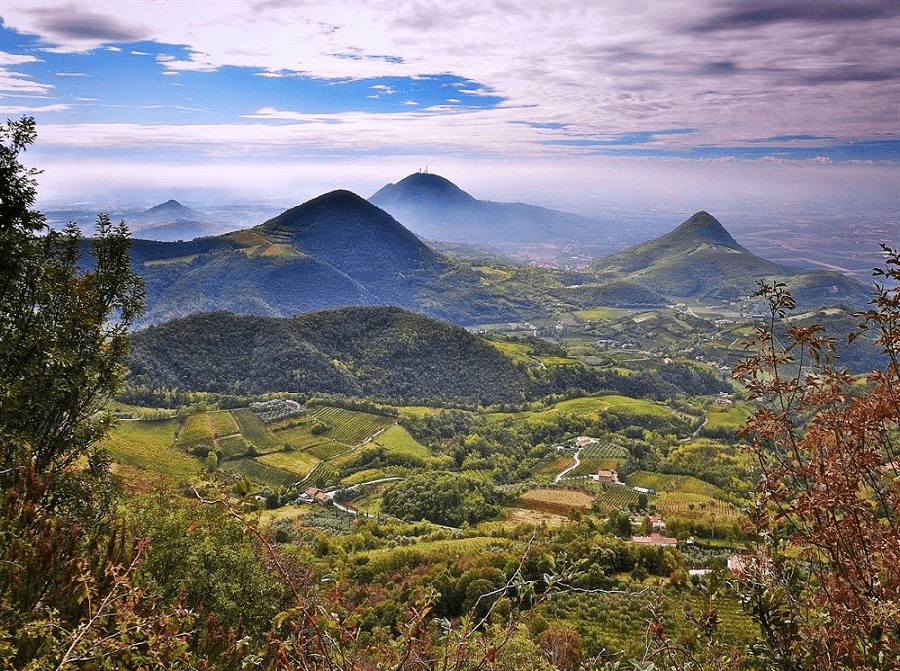
Before digging into the precious peculiarities of the destination, it is important to get to know the origin of the Euganean Hills, in order to better embrace their natural features and understand the historical development of the place. The particular shape it presents today, characterized by delicate profiles, perfect cones and rounded summits, is the result of a history million years long, characterized by volcanic eruptions, sleeps, emergences and water recedes.
The most ancient hills, indeed, are old volcanos, appeared 43 million years ago during the “first eruptive cycle”. Throughout this phase, the land was still situated under the water and, from some fractures of the sea crust, some magma spilled on the sea bottom creating perfect conic shapes. After a break of 10 million years, the “second eruptive cycle” took place and others hills sprouted. In this case, a lighter, more acid and viscous magma spewed out, creating calcareous “bubbles”. Some of them were high enough to peek out from the level of the sea, designing a landscape similar to a modern archipelago of islands. Finally, due to other movements of the Earth's crust, around 25 million years ago, the sea retreated, so the entire structure rose and emerged completely from the sea. At that point, the Euganean Hills as we know them now were almost made. They just needed the power of atmospheric agents, such as rain, wind and snow to achieve the smooth slopes and gentle silhouettes they present today.
The volcanic history of the hills holds some connections with another interesting aspect of the area: the presence of thermal waters. The origin of the thermal process can be found up north, on the Little Dolomites, where the rain and the snow land on the mountains’ steep slopes and begin the slow path of descent within the fractures of the calcareous rocks. The water reaches a depth of 3,000 meters, getting hotter and hotter and acquiring salinity the more it moves close to the centre of Earth. After a journey lasting about 30 years, the water finds a way to rapidly emerge again on the surface, facilitated by the soil composition of the volcanic hills. It presents an average temperature of 75°C and numerous mineral salts. It is the perfect element for beneficial and relaxing baths and for the preparation of thermal muds.
Outdoor activities deep in the green hills
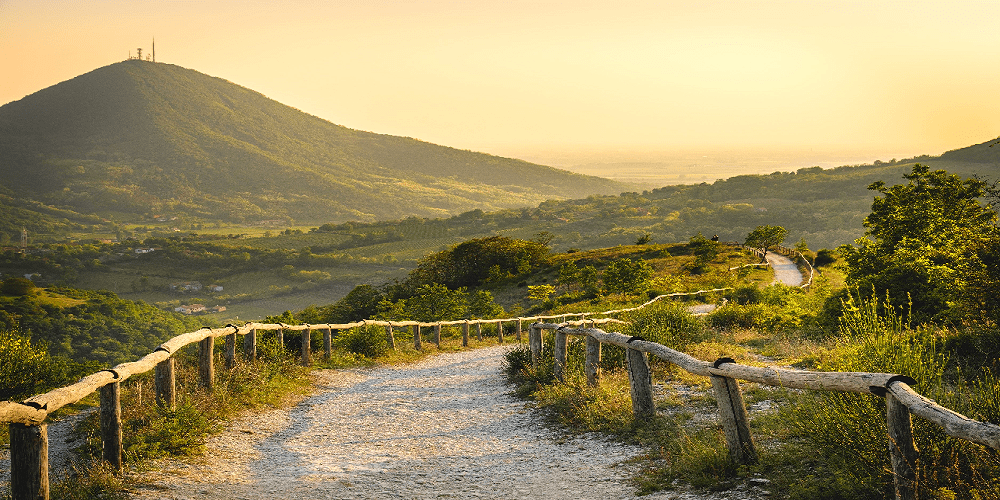
At the Euganean Hills the real protagonist is the nature. The area offers unique views and experiences into the wild that are accessible to everyone. Indeed, the difficulty levels of the numerous paths and trekking of the park range from touristic to expert hiking, giving everyone the chance to visit the place. Athletes, experts, yet also families, sprightly elderly and even couch potatoes can find a proper activity to enjoy the area without risks.
The hills are teemed with more than 200 trekking paths, unrolling throughout peaks, slopes and alongside ponds and lush woods. During autumn, walking on a trail and looking at the surrounding details turns into an amazing adventure. The leaves of the trees, the ground, the humid rocks merge together, creating fleeting shapes of lights and shadows. The feeble rays of the sun peek out from the crumbling foliage and light up the colours of the vegetation: red, yellow and orange in all their different nuances create the scenario for the perfect autumn vibes.
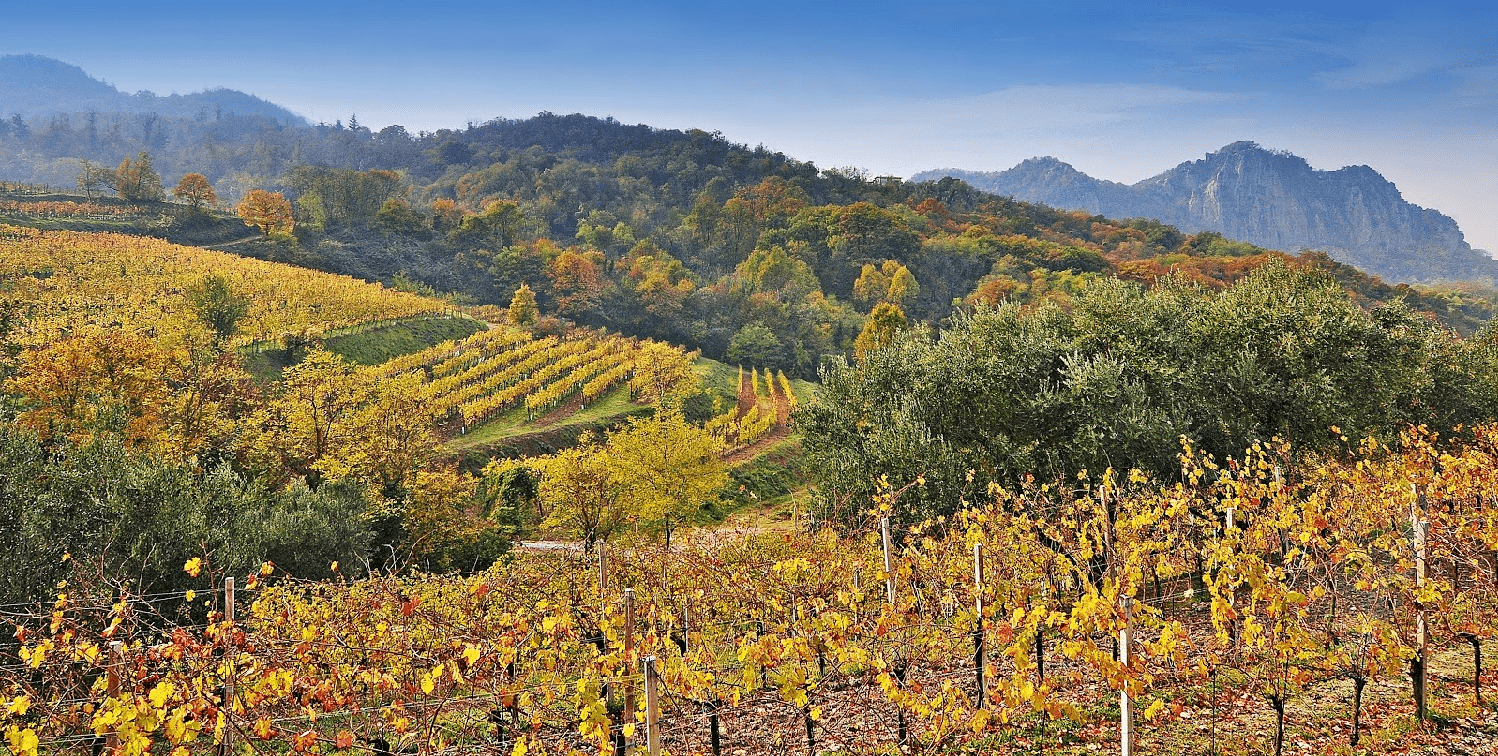
Probably the most famous trail of the area is the Alta Via dei Colli Euganei, a 41km trekking, to be complete within one day and that offers suggestive views of vineyards, other peaks and the flat countryside nearby. Thematic itineraries can be found at the Strada del Vino dei Colli Euganei, suggesting pathways enriched by stop-overs at farms, restaurants and winegrowers, to taste the food pleasures of the territory and to sip the celebrated wines of the hills.
An easy path is the Sentiero del Monte Grande, a walk of 4km through a rugged road craved on the rock and characterized by a chestnut forests rich in chestnuts to gather exactly in this period of the year. Bring some bags with you and fill them in with these tasty nuts. Once home, boil them for about an hour, then pill and enjoy a simple, yet typical fall delicacy! At the starting point of the just mentioned track, an adventure park has been built, with courses of different difficulties including bridges, zip walks and obstacles, all suspended on the air and hanging from the trees.
If interested in height and adrenaline, for the most experts, Euganean Hills provide even a crag, hosting an outdoor climbing gym. This vertical wall of stone is 180m tall and breaks the winding course of the other hills. This is Rocca Pendice, offering more than 200 routes of several different difficulty levels, from the easiest (level 3c, speaking technically) to extremely hard paths (level 8b). In the crisp fall days, training here is a pleasant experience; the rock is fresh and the terrain releases a bit of dew, yet, as soon as the ascent starts, the rays of the sun come through the forest, warming up the body and creating a mystic atmosphere. For the climbers of the Venetian plain, this place is a paradise of sport, where endless challenges can be found in the shape of steep walls, dihedrals, overhangs, slabs and vertical faces.
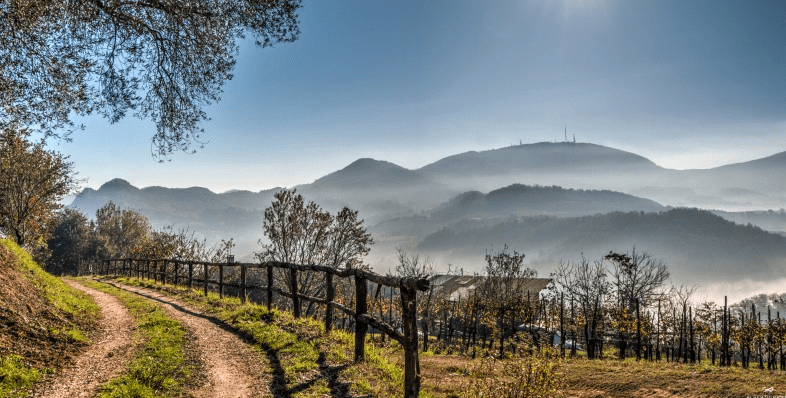
The bicycle is another way of travelling through the Euganean Hills, thanks to the presence of many mountain bike-friendly paths. This is the perfect activity to collect breath-taking moments, because of the panoramas unwound along the way and because of the effort requested to reach some of the hilltops! The most famous bike itineraries are the Anello dei Colli Euganei, a ring of 63km that follows the external perimeter of the park and the Mountain Bike Theme Path, a circuit with a low environmental impact, that boosts the natural beauties of the land and shows example of old rural life of the hills.
Wellness and relax at the thermal spas
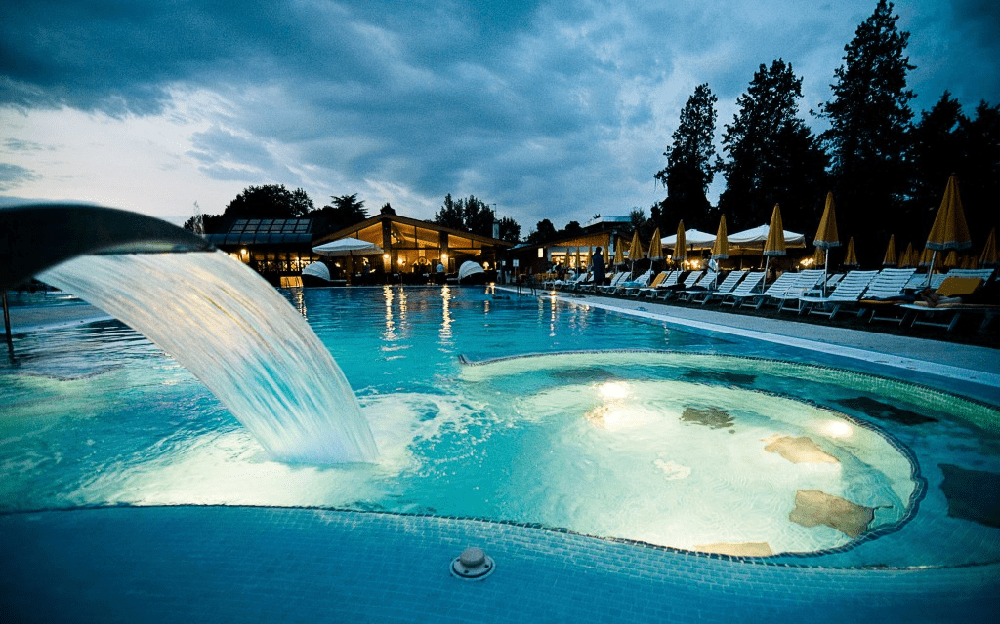
On the north-east side of the Euganean Hills the towns of Abano Terme and Montegrotto Terme snuggle at their foothills. These two municipalities have been well-known for over 2000 years, as a temple of relaxation and well-being.
The myth explains how Ercole and his Greek companions, after winning over Gerione, found refreshment and comfort exactly in this spot, where they discovered its water and used it to heal and rest after the battle. Attracted by the magical properties of the place and lured by the beauty of the hills nearby, they decided to settle down and to never go back home. Therefore, the word “Euganei”, which comes from the Greek translation of “nobility of lineage”, might be connected to the legend.
From the Romans’ time when the first spas were built, the concept of wellness has always been a philosophy of life and it has been lived through the thermal water in all its possible shapes. The area offers over 130 spas with, altogether around 200 baths. Each spa hotel has its own spring and offers a great deal of thermal treatments around it. At any corner the atmosphere is pleasant and comfortable, thanks to the relaxing effects of indoor and outdoor thermal pools, whirlpools, water massages, saunas and steam baths. Yet, it is not only pure pleasure, indeed, the thermal water also contributes to the disposal of metabolic waste and toxins, while toning the body.
During the fall season, a day at the thermal baths will be an unforgettable moment. The hills impose their presence rising above the towns, while the fresh breeze of the higher altitudes comes above the outdoor pools, merging with the steam of the hot water, creating a sense of magic and serenity. Cuddled by a sense of wellbeing, the pool’s water jets, the water bubbles and fountains take care of the body holistically, restoring both the physique and the mind. The thermal experience can also be boosted by breaks to dedicate to natural infusion tastings or wellness paths, where the body has to be immerged first in cool and then in really warm water, for both an internal and external reawaken.
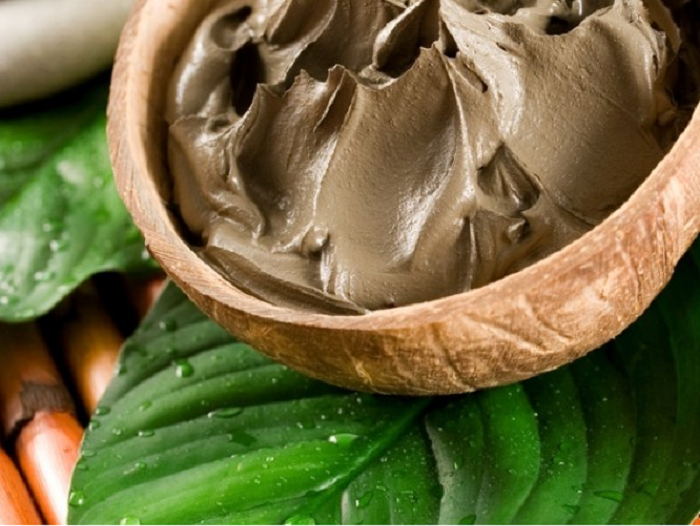
The thermal water of Abano and Montegrotto Terme not only is the perfect solution to relax and revive from the stress and the duties of the everyday life, yet, it fits also the needs of people with physical issues and diseases. Indeed, the thermal water has healing properties, due to its composition rich in dissolved substances, such as potassium, sodium, iodine, magnesium, silicon and bromine. From a chemical perspective, this water is codified as hyperthermal sodiobromidiodic watersand and it is unique in its kind. The thermal baths are used to relax muscles, reduce pain, healing joints and stimulate blood. The water has also a disinfectant action, since it helps eliminate bacteria and fungus. Moreover, through inhalation therapies, usually in thermal caves, it cures respiratory conditions.
Finally, the thermal water is the fundamental element employed in the creation process of thermal mud, which is a combination of the former with clay and micro-organisms and is scientifically declared effective in the treatment of cartilage inflammation, thanks to its anti-inflammation and analgesic principles. The healing mud treatment consists in four different phases: the application, the bath in the thermal pool, the sweat reaction and a final body massage, resulting really effective. The thermal water, therefore, is the concrete proof of how the connection between humans and nature can be beneficial and powerful.
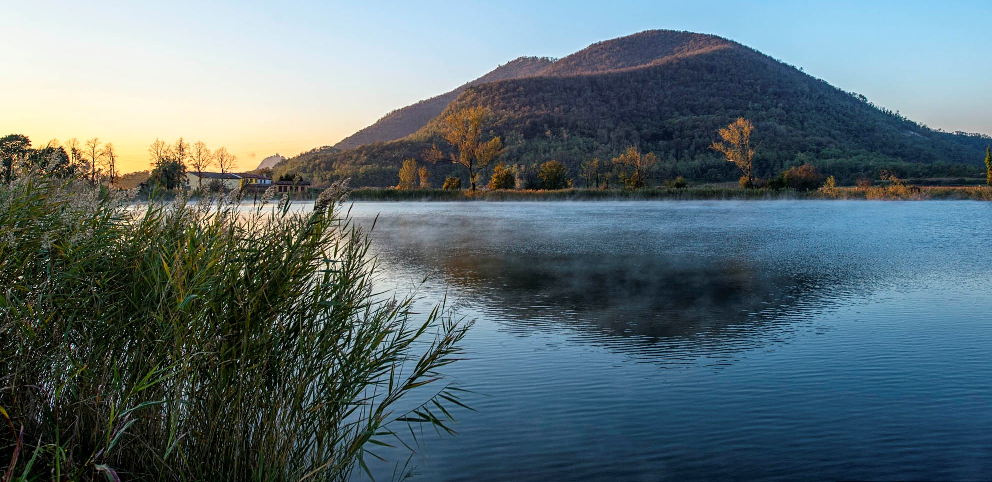
If the need to reconnect with the “wild nature” is compelling, after a day in the name of relaxation at the spas, on the Euganean Hills there are still two little lakes with springs of thermal water. The Lispida Lake, between Abano and Montegrotto Terme and Costa Lake in Arquà Petrarca. Swimming is not an allowed activity, yet, they can be checked out during a walk along the countryside, to discover the places where the thermal mud comes from.
The charming hamlets of the Euganean Hills

The Euganean Hills are not only the land of nature and relax, yet also home for some picturesque little towns, which lay quietly among the hills. Perfect to be discovered during a breezy autumn day, these centres enchant visitors with their bucolic spirit. The cobbled roads, the stone buildings and the elegant squares unveil sceneries rich in culture, history and art. Here, the lush vegetation of the hills merges with the sharp lines of the artificial structures, in an endless bond between men and nature; the connection is so vivid that it appears like a poetic image.
On the East side of the Park, the first hamlet to be spotted is Arquà Petrarca, a delightful town where the time seems to stand still, paused back on the Middle Ages. The buildings of the 11th century treasure the magic of those ancient times and make the venue worth a visit. The most important construction of this Euganean’s gem is the house of the great poet Francesco Petrarch, who decided to spend at Arquà the last five years of his life, from 1369 to 1374. His presence was so paramount that, after his death, the town became a pilgrimage destination for poets and writers and changed even the name, to impress forever its link with the poet. In the 16th century, the house turned into Petrarch’s Memorial Museum and illustrates his life and works through exhibitions, frescos and conserving the structure of the venue as he designed it.

After just six kilometres trip, another town with authentic medieval vibes is Monselice, spreading over the wide plain between two hills, Rocca and Montericco. This destination gleans the legacy of the civilizations which settled down here, from the Bronze Age, to Byzantines, Romans, Langobards and finally Venetians. For this reason, there are many interesting attractions to hunt. The most majestic one is Cini Castle, the medieval building from the 11th century, which served, throughout the centuries, as lords’ house, defensive tower and villa. Today, it hosts a library, the Langobards Antiquarium, exhibitions of tools of the Middle Ages and Renaissance, a collection of weapon and armours and several spaces showing medieval and Renaissance styles. Moreover, in Monselice there is the Sanctuary of the Seven Churches, an itinerary composed by six votive chapels aligned one after the other alongside the Rocca Hill ending with one last bigger church. The patron Pietro Duodo imagined the sanctuary and commissioned its realization to the architect Scamozzi on the late 16th century. It soon became a pilgrimage destination since, in 1606, Pope Paul V granted significant indulgencies to all the Christians visiting it. Beside the religious value, the chapels hold also an artistic importance, since contain paintings of the artist of the venetian school, Palma il Giovane. In the town, the architect Scamozzi realized another remarkable work for its patron, Villa Duodo, impressive especially for its stairway.
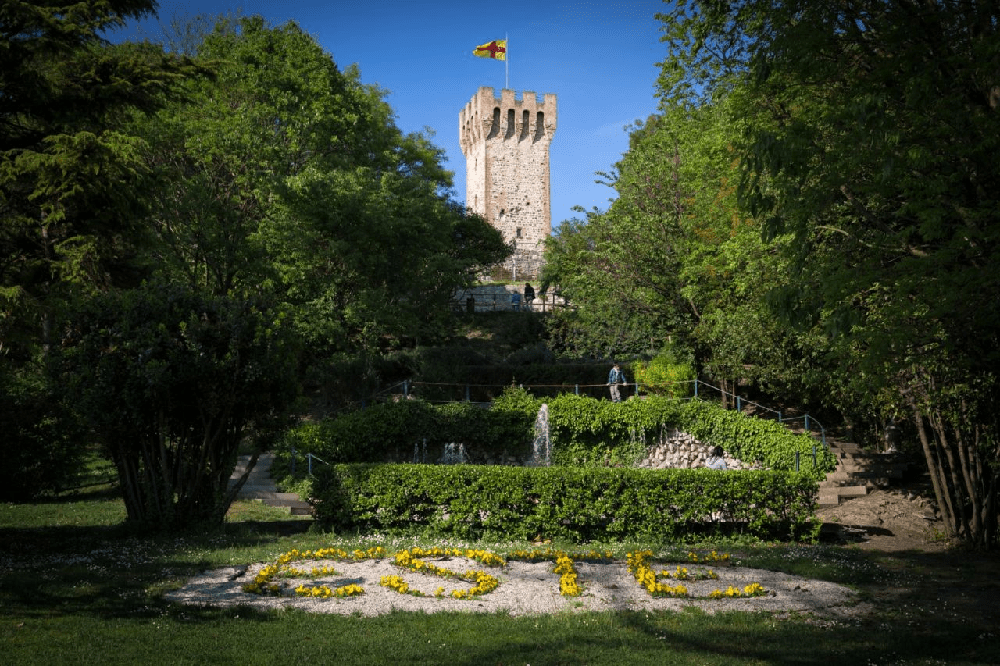
On the southern side of the Euganean Hills rises the delightful centre of Este, appealing for its splendid city walls and its ancient charm. A great deal of artistic and architectural landmarks fills the destination, first among all the Carrara Castle, dated 1339 and whose remains today are the dungeon on the top of the hill and the walls with twelve towers. This defensive construction enshrines today a beautiful urban garden, whereas the centre of the town lays immediately outside it. Right behind the walls, a beautiful villa stands out from the surroundings. It is Villa Vigna Contarena, designed by the architect Scamozzi in the first years of 17th century, for the Contarini Family, who used it as a venue of relaxation, leisure and during the times of grape harvesting. The venue is rich in frescos, Murano glass chandeliers, ancient furniture and a curious secret garden, offering a fusion of Persian and Italian garden styles.
Sometimes the fall can be a little bit gloomy and melancholic. The days shrink and the nights stretch, the free time slips away while the summer joy seems to be just a distant memory. Nevertheless, the Euganean Hills will help reconnect with all the beautiful aspect of the season; among warm colours, thermal water, walks on elegant peaks and medieval atmospheres, you will just wish to stop the clock, in order to enjoy the view a little bit more!
Useful information
Monselice Castle is open to the public:
- From March to October every day at the following hours: h 09:00 - 10:00 - 11:00 am/ h 03:00 - 04:00 - 05:00 pm
- November, December and February every day at the following hours: h 10:00 - 11:00 am/ h 02:00 - 03:00 pm
- In January the Castle is open only for groups on request.
Petrarch’s House in Arquà Petrarca is open to the public:
- From March to October at the following hours: h 09:00 - 12:30 am / 03:00 - 07:00 pm
- From November to February at the following hours: h 09:00-12:30 am / 02:30-05:30 pm
- The Museum is closed every Monday except public holidays, Christmas, St. Stephen's, New Year's, 1st of May.
- Currently under restauration, the visit is possible beside the “Stanza delle Visioni”.
Villa Vigna Contarena in Este is open to the public: On Monday from h 10:00 to 12:00 am.










Lascia un commento